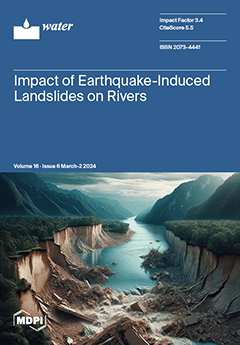The parameters of the GR4J-CemaNeige coupling model (GR4neige) are typically treated as constants. However, the maximum capacity of the production store (
parX1) exhibits time-varying characteristics due to climate variability and vegetation coverage change. This study employed differentiable parameter learning (dPL) to
[...] Read more.
The parameters of the GR4J-CemaNeige coupling model (GR4neige) are typically treated as constants. However, the maximum capacity of the production store (
parX1) exhibits time-varying characteristics due to climate variability and vegetation coverage change. This study employed differentiable parameter learning (dPL) to identify the time-varying
parX1 in the GR4neige across 671 catchments within the United States. We built two types of dPL, including static and dynamic parameter networks, to assess the advantages of the time-varying parameter. In the dynamic parameter network, we evaluated the impact of potential evapotranspiration (PET), precipitation (P), temperature (T), soil moisture (SM), and normalized difference vegetation index (NDVI) datasets on the performance of dPL. We then compared dPL with the empirical functional method (fm). The results demonstrated that the dynamic parameter network outperformed the static parameter network in streamflow estimation. There were differences in streamflow estimation among the dynamic parameter network driven by various input features. In humid catchments, simultaneously incorporating all five factors, including PET, P, T, SM, and the NDVI, achieved optimal streamflow simulation accuracy. In arid catchments, it was preferable to introduce PET, T, and the NDVI separately for improved performance. dPL significantly outperformed the empirical fm in estimating streamflow and uncalibrated intermediate variables, like evapotranspiration (ET). Both the derived
parX1 from dPL and the empirical fm exhibited significant spatiotemporal variation across 671 catchments. Notably, compared to
parX1 obtained through the empirical fm,
parX1 derived from dPL exhibited a distinct spatial clustering pattern. This study highlights the potential of dPL in enhancing model accuracy and contributes to understanding the spatiotemporal variation characteristics of
parX1 under the influence of climate factors, soil conditions, and vegetation change.
Full article





